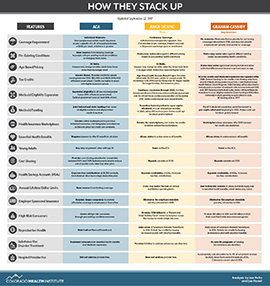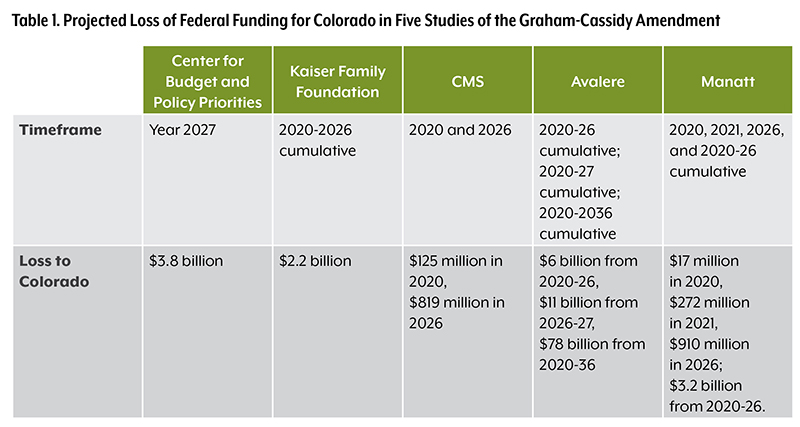The U.S. Senate’s latest version of a bill to repeal and replace the Affordable Care Act (ACA) would cost Colorado billions of dollars in federal funding, according to four national studies.
The so-called Graham-Cassidy amendment has four major components:
- It ends both the ACA’s Medicaid expansion and subsidies for private coverage in 2020.
- It takes a portion of the funding for Medicaid expansion and subsidies and distributes it to states in a temporary grant program, allocating it based on a state’s low-income population.
- It allows states to waive most of the consumer protections of the ACA, such as essential health benefits and bans on charging insurance customers more based on their age or health conditions.
- It converts funding for the rest of Medicaid — the pre-ACA expansion population — into a per-capita allotment that grows at a pre-determined inflation rate, which would likely provide less funding to Colorado than the current system.

Taken together, it’s nearly certain that this amendment would lead to a substantial drop in health coverage in Colorado, along with a loss of federal funding. ACA programs that provided coverage for more than half a million Coloradans would be repealed in 2020, with an uncertain replacement.
The major new feature of the Graham-Cassidy plan is called a Market-Based Health Care Grant Program in the draft. Under this idea, the ACA’s Medicaid expansion and private market subsidies would end, and most of the funding would be put into the new grant program.
Funding would be capped nationally at $136 billion in 2020, and it would grow each year, reaching $200 billion in 2026, when the grant program would end.
States would be funded initially based on the number of their low-income residents (those making 50 percent to 138 percent of the federal poverty level). In the last three years of the grant, some state funding would be based on how many people in this low-income group have health coverage, an incentive for states to ensure that most low-income residents are covered.
States could use the grants to expand health coverage in a number of ways. However, the Graham-Cassidy amendment bases its funding on coverage for low-income people, so it’s likely states would concentrate their efforts on this group. The funding formula has no specific incentive for states to offer aid to the middle class, which has been hit with double-digit increases in the price of insurance the past few years. States would have little time to create their systems. The deadline to apply for 2020 grants would be March 31, 2019.




